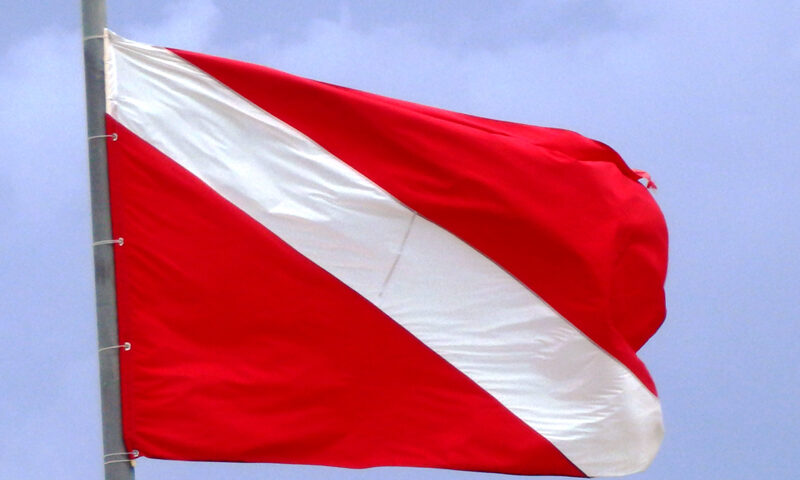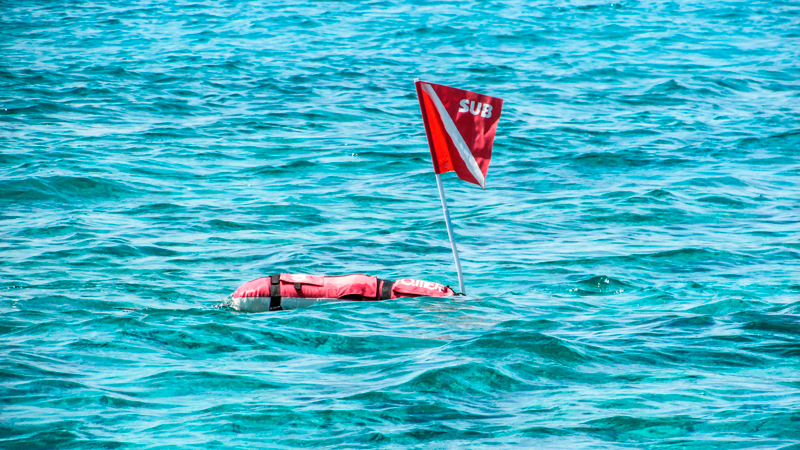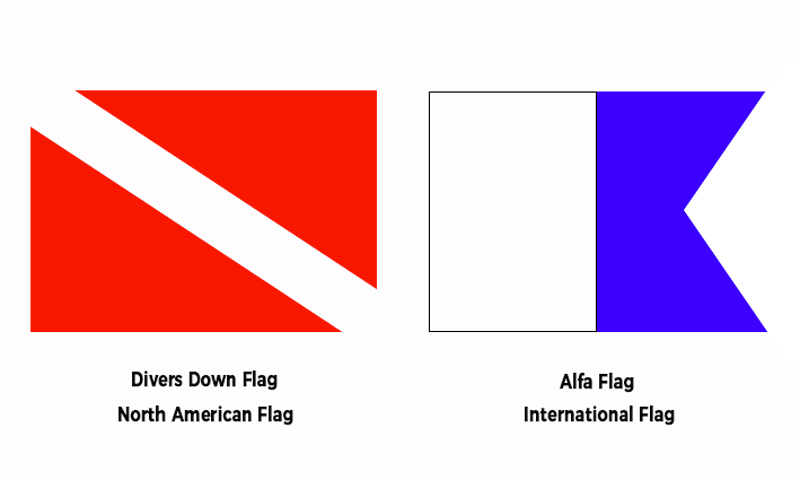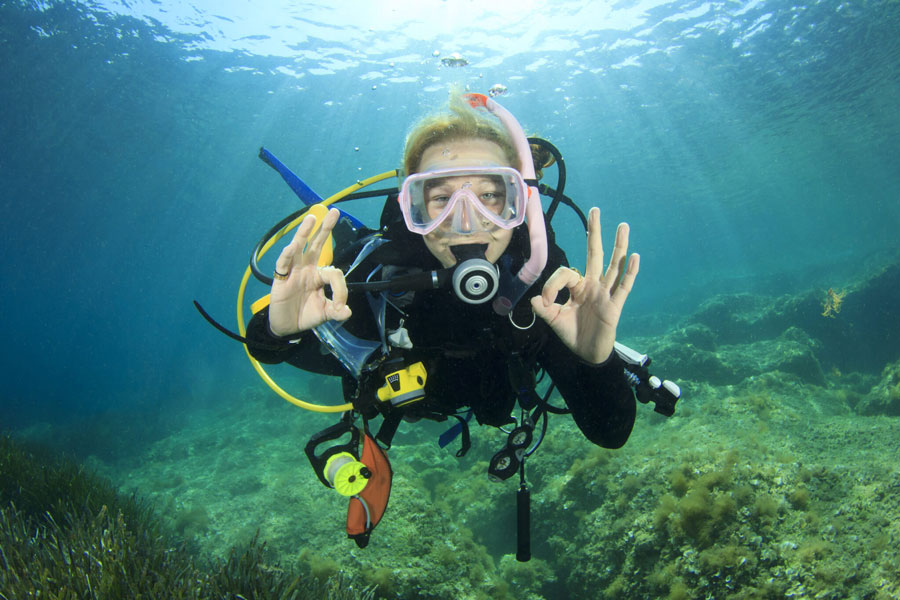1. What Color Is a Diving Flag?
Let me tell you the story of scuba diving flags.
Ships are crossing the seven seas, each leaving from multiple ports, coming from separate places, and going to different destinations.
Their crews usually come from numerous corners of the planet.
They do not share the same language; neither know what language the other speaks.
However, they take out their little flags and send each other messages. On a boat, everybody understands the meaning of nautical flags from a distance and without a word.
Nautical flags use the international code of signals (CIS) that allows visual, simple, and fast communication on the high seas, also between ships and ports.
Each flag has a different shape and color. It corresponds to a letter of the Greek alphabet and the numbers from 0 to 9. If flown alone, some flags have a specific meaning.
The white and blue flag corresponds to the letter “Alpha” and is one of our diving flags. But it was not the first.
1.1. Divers Down Flag: Red Flag with White Diagonal Stripe
In the 1950s, and due to the growing popularity of scuba diving, James Dockery, a U.S. Navy diver, decided to design his diving flag.
He was inspired by the nautical flag code, specifically the “Bravo” flag.
Bravo flag alone means “loading and unloading dangerous goods” (usually explosives). So, Dockery thought that a flag similar to the bravo flag would deter ships from approaching the divers.
He placed a diagonal white stripe on a red square, and its use was spread by the diving magazine Skin Diver, especially among the American public. As the most widespread certifying agencies are American, more and more divers knew this flag.
1.2. Alpha Flag: White and Blue Scuba Flags
Meanwhile, the alpha flag was used by divers freely in Europe until 1961.
That year, the Inter-Governmental Maritime Consultative Organization (IMCO), which did not see the need to include a new flag in the nautical code, chose the alpha flag (white and blue) to indicate diving operations.
It is therefore internationally recognized and in use. Note that vessel captains do not necessarily have to be divers, but they have to know what the nautical code flags mean.







